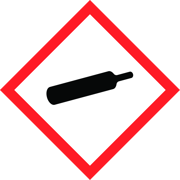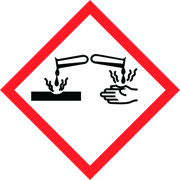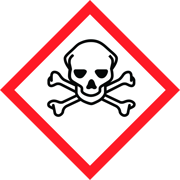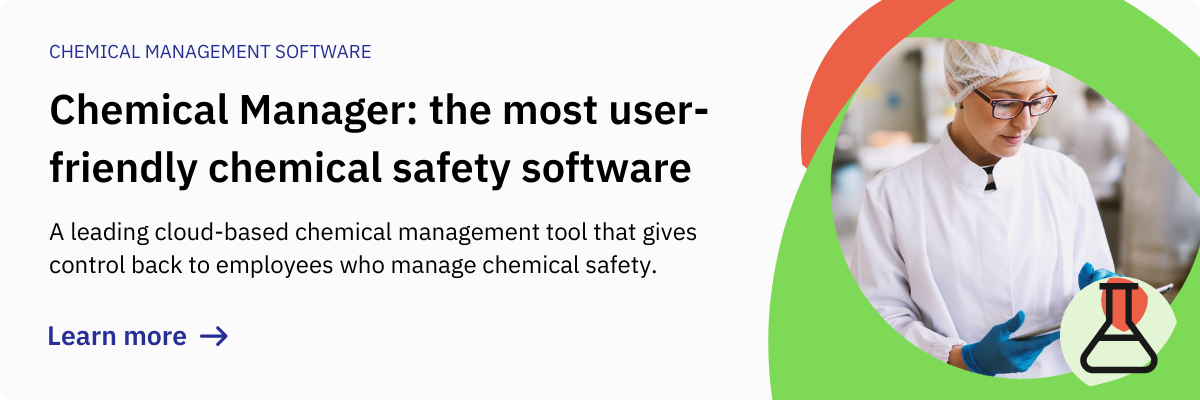One of the main issues we have identified in workplaces is an inability to identify or recognize hazards associated with chemicals. This may be due to a lack of training on hazards in the workplace, not using any chemical reporting tools, or a poor health & safety culture. However, when the International Labor Organization links approximately 2.4 million deaths worldwide to work-related diseases every year, can we continue to be complacent and ignore the importance of chemical safety?
The aim of this article is to provide you with the tools you need to easily identify chemical hazards and put precautions in place to minimize or prevent the adverse effects of the chemical hazards.
What is a hazard?
According to chemical legislation a hazard is defined as “property or set of properties that make a substance dangerous”. It is basically intrinsic properties of that particular substance which make it capable of causing harm to people or the environment.
Hazardous chemicals can be substances, mixtures or articles which pose a health, physical or environmental risk.
What should you do?
The first step of ensuring the control of hazardous substances in the workplace is to complete an up-to-date inventory of all your chemicals. As part of this inventory, safety data sheets (SDSs) should be sourced from the manufacturer or supplier of the product. The manufacturer or supplier of a product is responsible for evaluating and classifying chemicals in accordance with national and international legislation. The identified classification must be communicated to your company by means of a safety data sheet and product label. The product label and SDS are the most important sources of information about the hazardous properties of your chemical.
They will present the following information to help you identify the hazards relevant to your products:
- Hazard pictograms
- Hazard statements
Watch this short video explaining the importance of chemical safety in the workplace:
In addition, the product label and SDS will also provide information on how you can mitigate the potential risks in the form of precautionary statements.
The hazard pictogram gives you a quick indication of the hazards associated with the chemical. Each pictogram has been standardized by the Globally Harmonized System of Classification and Labelling of Chemicals (GHS) and consists of a symbol on a white background within a red border.
Each pictogram identified a unique hazard associated with your product. It is important to note that your product label or SDS may have multiple hazards associated with it and will therefore display more than one pictogram.
Pictogram |
Hazard |
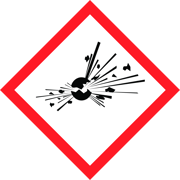
|
Unstable explosive. Explosive; mass explosion hazard. Explosive; severe projection hazard. Explosive; fire, blast or projection hazard. May mass explode in fire. |
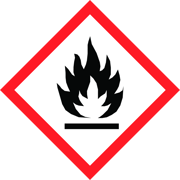
|
Extremely flammable gas / Flammable gas. Extremely flammable aerosol/ Flammable aerosol. Highly flammable liquid and vapor/ Flammable liquid and vapor. Flammable solid. |
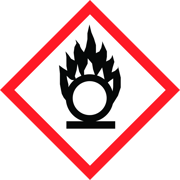
|
May cause or intensity fire. May cause fire or explosion.
|
|
|
Contains gas under pressure; May explode if heated. Contains refrigerated gas; may cause cryogenic burns or injury. |
|
|
May be corrosive to metals. Causes severe skin burns and eye damage. |
|
|
Fatal if swallowed/ inhaled. Toxic if swallowed/ in contact with skin/ inhaled. |
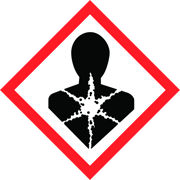  |
May be fatal if swallowed and enters airways. May cause damage to organs/ Causes damage to organs. May damage fertility or the unborn child/ suspected of damaging fertility or the unborn child. May cause cancer/ suspected of causing cancer. May cause genetic defects/ suspected of causing genetic defects. |
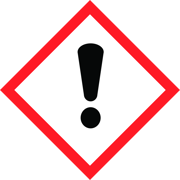
|
May cause respiratory irritation. May cause drowsiness or dizziness. May cause an allergic skin reaction. Causes serious eye irritation. Cause skin irritation. Harmful in contact with skin. Harmful if swallowed. Harmful if inhaled |
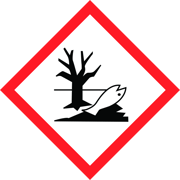  |
Very toxic to aquatic life with long lasting effects/ toxic to aquatic life with long lasting effects. |
The hazard statements provide details on the nature of the hazards associated with a hazardous product. In some cases it also identifies the degree of hazard. In the EU, the CLP Legislation assigns a unique alphanumerical code to hazard statements. These hazard statements consist of one letter and three numbers i.e. H302 – Harmful if swallowed. The OSHA Hazard Communication Standard (HCS) in the US does not require the same codification system; however, hazard statements must be identified as such and must correspond to the text in the regulations. The hazard statements will be included, with the hazard pictogram, in Section 2 of the SDS or on the product label in accordance with the regulations in your jurisdiction. A full list of the hazard statements can be found in the legal text.
Precautionary statements give advice on the recommended measures that should be taken to minimize or completely prevent adverse effects resulting from exposure to a hazardous product. For the purpose of the CLP and OSHA Legislation, there are five types of precautionary statements:
- General e.g. Keep out of reach of children.
- Prevention e.g. Protect from moisture.
- Response e.g. DO NOT fight fire when fire reaches explosives.
- Storage e.g. Store in a closed container.
- Disposal e.g. Dispose of contents/container to specialized waste facility.
Like the hazard statements, the precautionary statements will also be present in Section 2 of the SDS. It is important to take note of these and ensure all practicable precautions are put in place to reduce the risk of injury or ill-health occurring. Hopefully this article will help you to identify the hazards associated with the chemicals in your workplace and to identify ways in which these hazards can be mitigated.
.png?width=800&height=300&name=Chemical%20Manager%20CTA%20Template%20(2).png)
